Don’t Miss These 30 Incredibly Famous Landmarks in Italy
17 min readThere’s nothing quite like Italy. This beautiful country is one of the most popular countries to visit, and there’s a reason for that. Beyond the incredible culture and food, Italy’s attractions and landmarks are some of the most recognizable in the world. I’ve visited Italy dozens of times and continue returning for more. The famous landmarks never get old (no pun intended).
They just get insanely busy, so I advocate visiting Italy during off-peak travel seasons. Below, I’ll walk you through the most historic and famous landmarks in Italy and explain why you should visit at least once in your lifetime.
What We Cover
Italy’s Most Famous Landmarks
| Landmark | City | Year Built |
|---|---|---|
| Colosseum | Rome | 80 AD |
| Leaning Tower of Pisa | Pisa | 1372 |
| Pantheon | Rome | 126 AD |
| St. Mark’s Basilica | Venice | 1092 |
| Duomo di Milano | Milan | 1386 |
Rome and Vatican City
1. The Pantheon – The Eternal Edifice
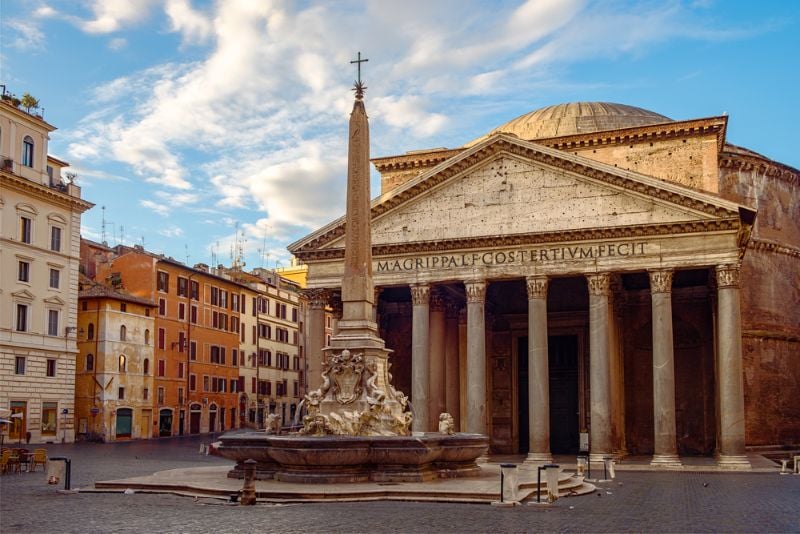

Address: Piazza della Rotonda, 00186 Roma RM, Italy
The Pantheon is in the heart of Rome, a colossal testament to ancient Roman engineering and copied the world over. With its robust columns and a domed roof that defies the ages, this ancient Roman temple, turned Catholic church, now a national landmark, is easily one of the most famous Italian buildings on this list. A place where art, history, and culture meld seamlessly, it attracts visitors in the thousands each day.
Externally, it’s a very impressive structure featuring robust columns and a large concrete dome. But once you get inside, you’ll truly appreciate what makes this famous Italian landmark so special. The oculus, a circular opening at the dome’s apex, serves as a celestial window, flooding the beautiful interior with natural light and connecting the earthbound space to the skies.
2. Trevi Fountain – Rome’s Most Famous Fountain
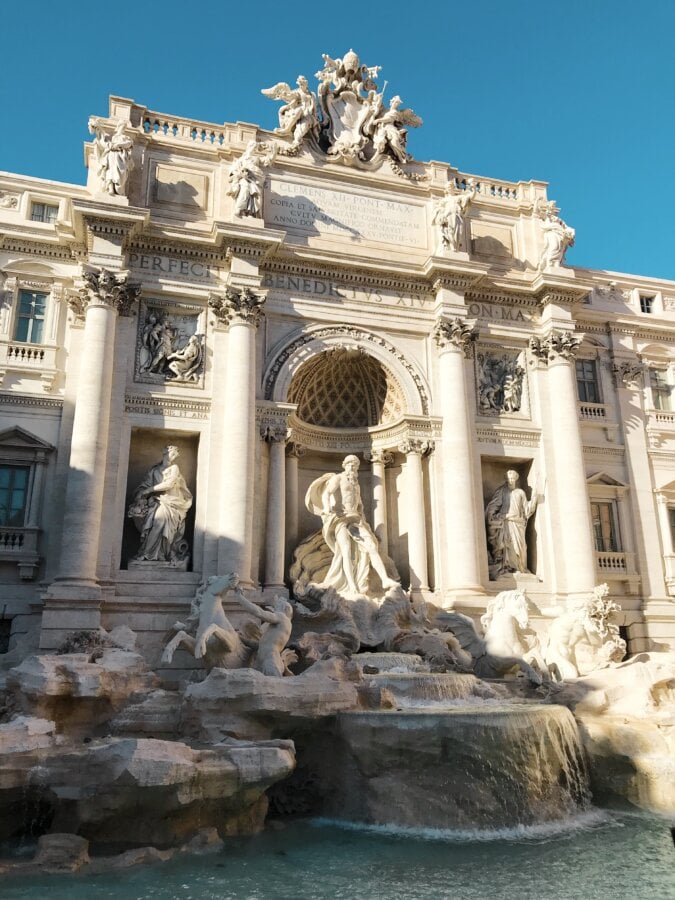

Address: Piazza di Trevi, 00187 Roma RM, Italy
Explore the Trevi district’s labyrinthine alleys in Rome, and you’ll eventually find the Trevi Fountain. This Baroque municipal fountain was designed to replace a dilapidated city fountain and was built in the mid-18th Century. As far as places to draw water are concerned, it’s something!
Mythic statues hold court over cascading waters, and you’ll typically see folks armed with coins and wishes tossing coppers and silvers into the splashing waters. Give it a go! The local trick is to throw with your right arm over your left shoulder.
Whether or not wishes do come true, it’s estimated about 3000 euros are thrown into Trevi Fountain every day. On top of being the city’s wettest piggy bank, it’s a spectacular landmark and an extremely popular tourist attraction.
3. Roman Forum – A Tapestry of Time
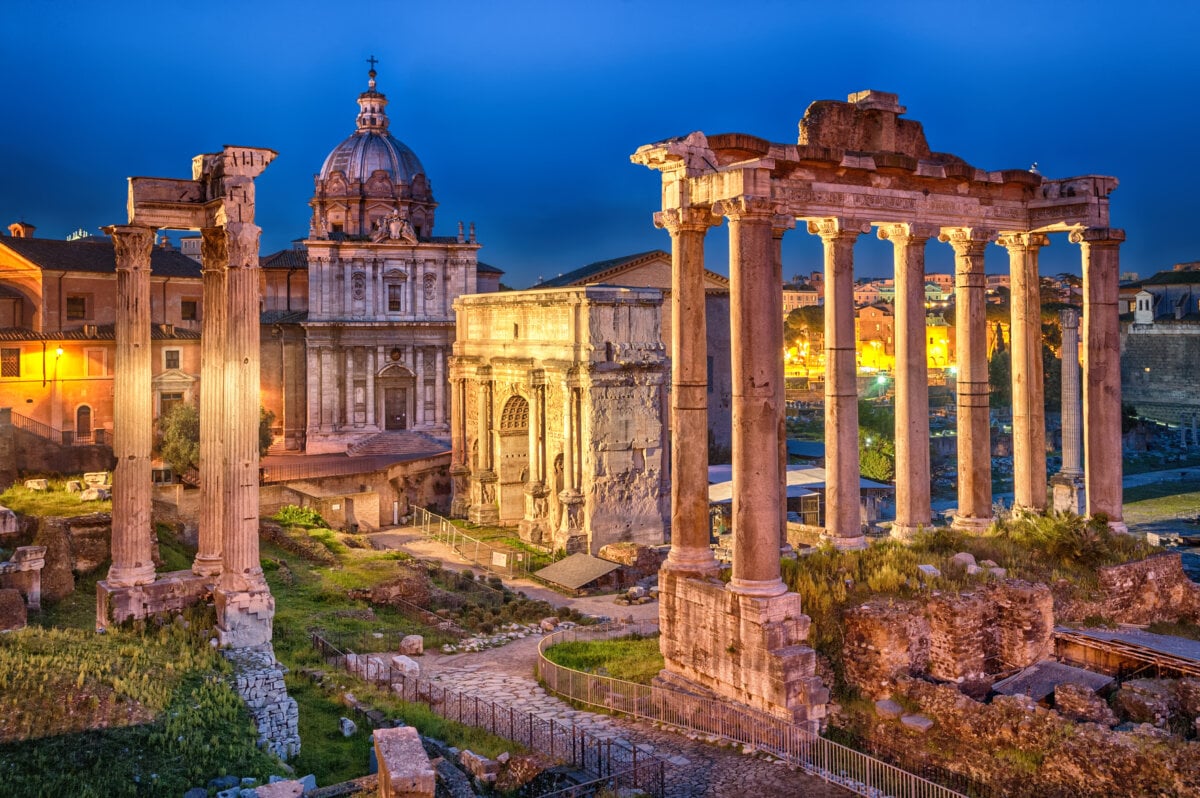

Address: Via della Salara Vecchia, 5/6, 00186 Roma RM, Italy
The Roman Forum, once the epicenter of power for the Roman Empire, is a sprawling testament to the city’s former glory. Despite being somewhat dilapidated compared to other famous monuments on this list, it is thousands of years old. It’s about as ancient Roman as you can get!
As you meander through the ruins, you can learn about the history of the Forum and what daily life in ancient Rome was like. The Forum was the epicenter of the Empire, being used for markets, proclamations, debates, speeches, parades, festivals, and more. There are numerous great photo ops here, so keep your camera handy.
4. Colosseum – Games and Circuses
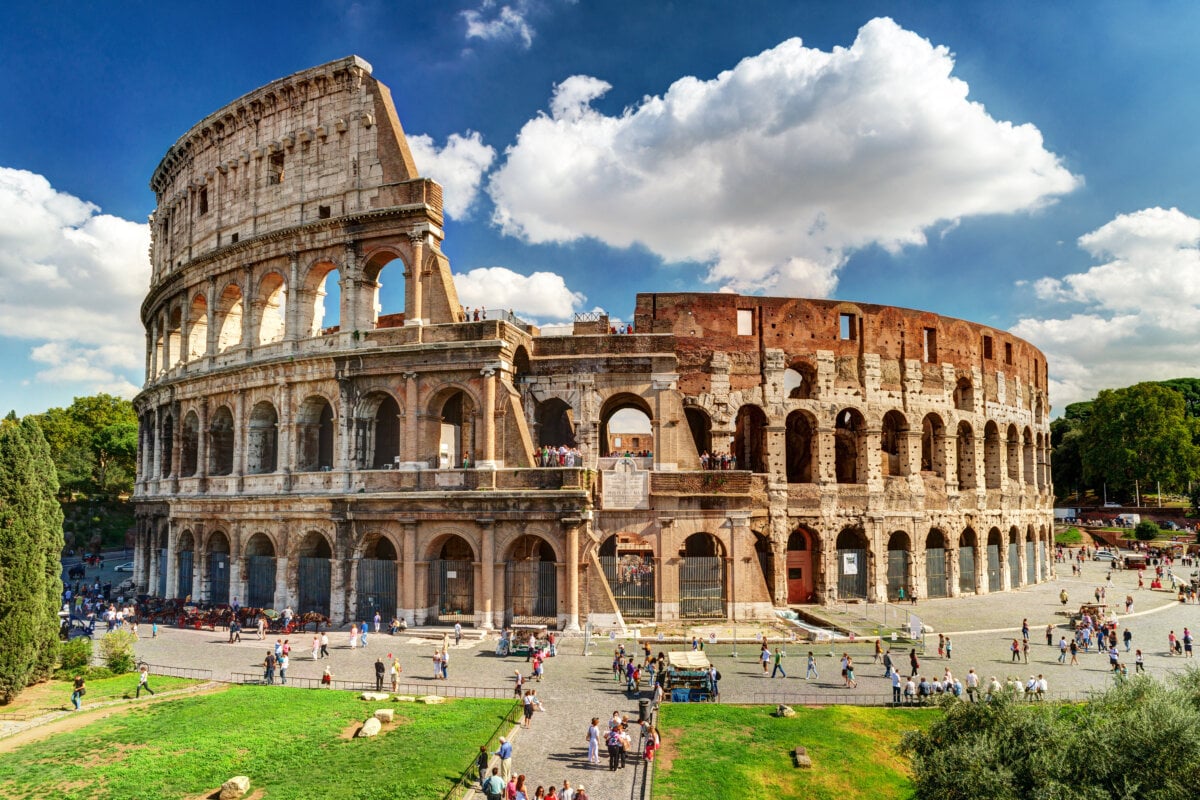

Address: Piazza del Colosseo, 1, 00184 Roma RM, Italy
Another ancient Roman landmark that epitomizes the might of the Roman Empire, the Colosseum is one of Rome’s most prominent landmarks and an enduring icon of the city’s majesty.
This huge amphitheater was where gladiators once clashed, Christians were fed to lions and tigers, and even mock naval battles were fought, all spectacles to keep the unwashed masses at bay.
It’s undoubtedly one of the most impressive engineering projects of ancient times and a monumental piece of architecture. It continues to awe visitors from around the globe as more than an ancient sports stadium but a symbol of Italian and European cultural heritage that has witnessed the ebb and flow of history, standing resilient over time.
5. Castel Sant’Angelo – Imperial Mausoleum Turned Fortress
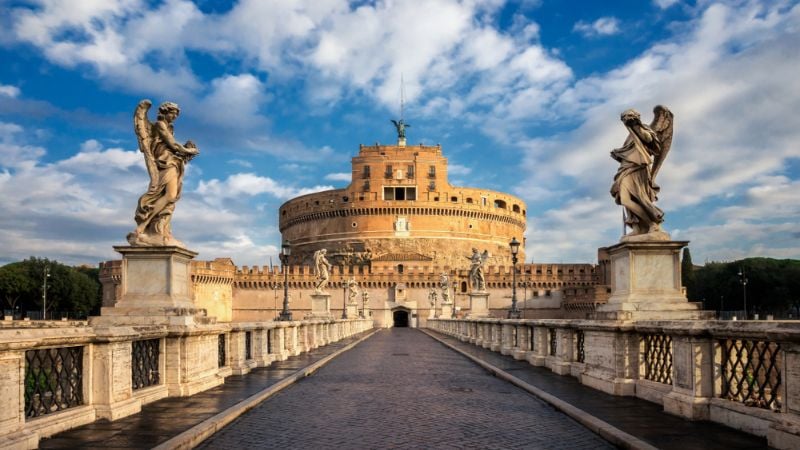

Address: Lungotevere Castello, 50, 00193 Roma RM, Italy
Perched on the banks of the River Tiber, Castel Sant’Angelo has stood sentinel over Rome for nearly two millennia. Originally built as a mausoleum for Emperor Hadrian, this cylindrical fortress has morphed through roles as a military bastion, a papal residence, a prison, and now a castle museum.
This museum narrates Rome’s layered history over seven levels. The castle’s ramparts offer a panoramic vista of the Eternal City, while its chambers host a surprising array of antique Italian works of art.
See Related: Best Museums in Europe to Visit
6. The Spanish Steps – Rome’s BIG Staircase
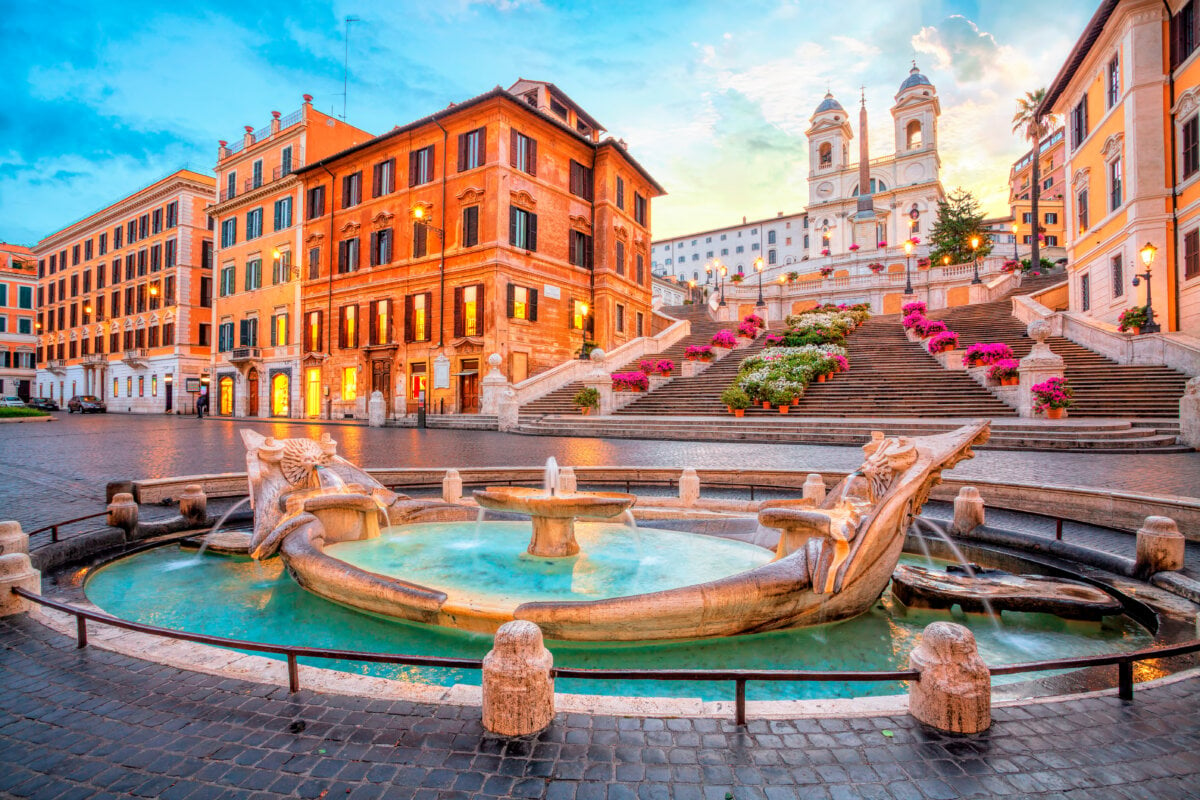

Address: Piazza di Spagna, 00187 Roma RM, Italy
The Spanish Steps are a grandiose flight from the Piazza di Spagna to the iconic Trinità dei Monti church. This monumental stairway, with 135 steps, was built in the 18th Century and has been a popular walkway and gathering spot since.
The steps are a stage for daily life, a meeting place, and a beloved photo opportunity that has captured the imagination of artists, poets, and dreamers for centuries. If nothing else, it makes for one of the most scenic short walks in the city!
7. Piazza del Popolo – People, Poplars and Pointy Things
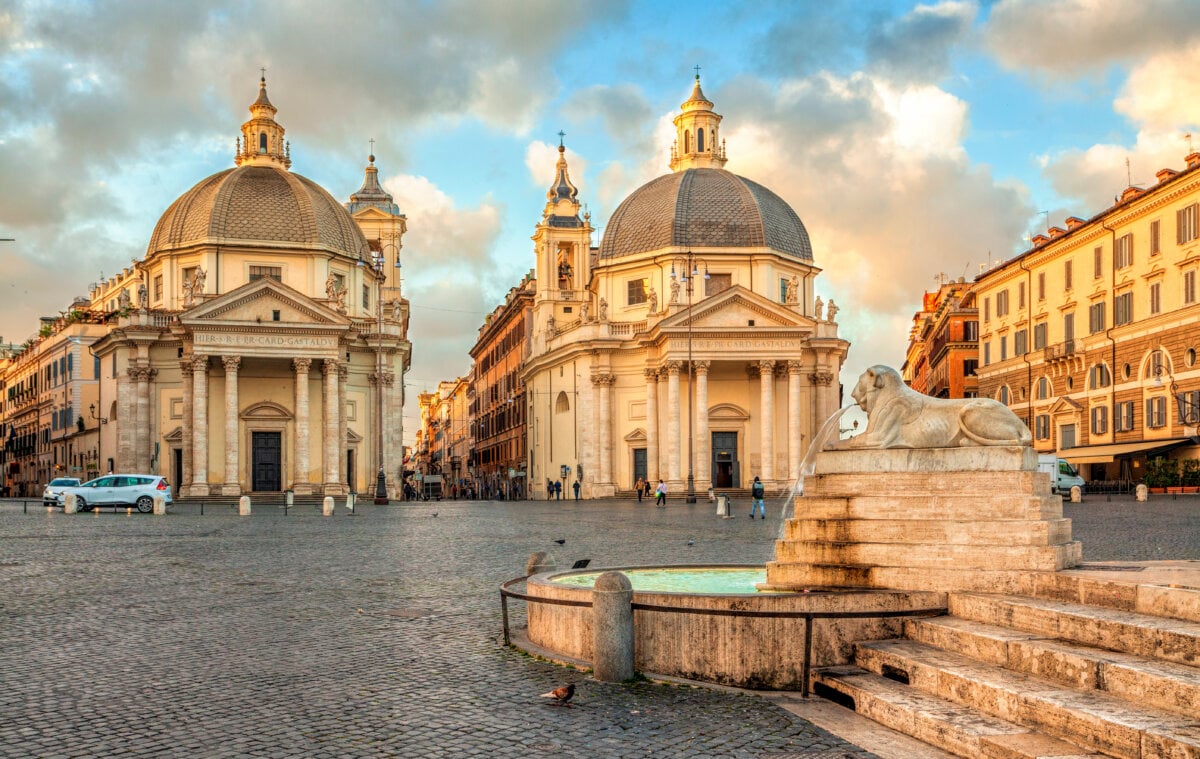

Address: Piazza del Popolo, 00187 Roma RM, Italy
Piazza del Popolo, the People’s Square, is a spacious oval square in the city’s heart. It’s been the site of public events, from triumphal processions to somber executions and everything else, since the ancient Romans.
Fronted by the twin churches of Santa Maria in Montesanto and Santa Maria dei Miracoli, it’s largely defined by the central ancient Egyptian obelisk of Sety I/Rameses II recovered from Heliopolis (now a part of modern-day Cairo). Greeting visitors with its grandiose layout, Piazza del Popolo is steeped in Rome’s history.
A meeting point of several famous thoroughfares, it was notably the starting block of the ancient Roman road, Via Flaminia, which led to the north and into the Germanic territories. This piazza was either a traveler’s first enchanting glimpse of Rome or the last time legionaries would see the city center before marching to the northern frontier.
8. Monument to Victor Emmanuel II – The Unifying King
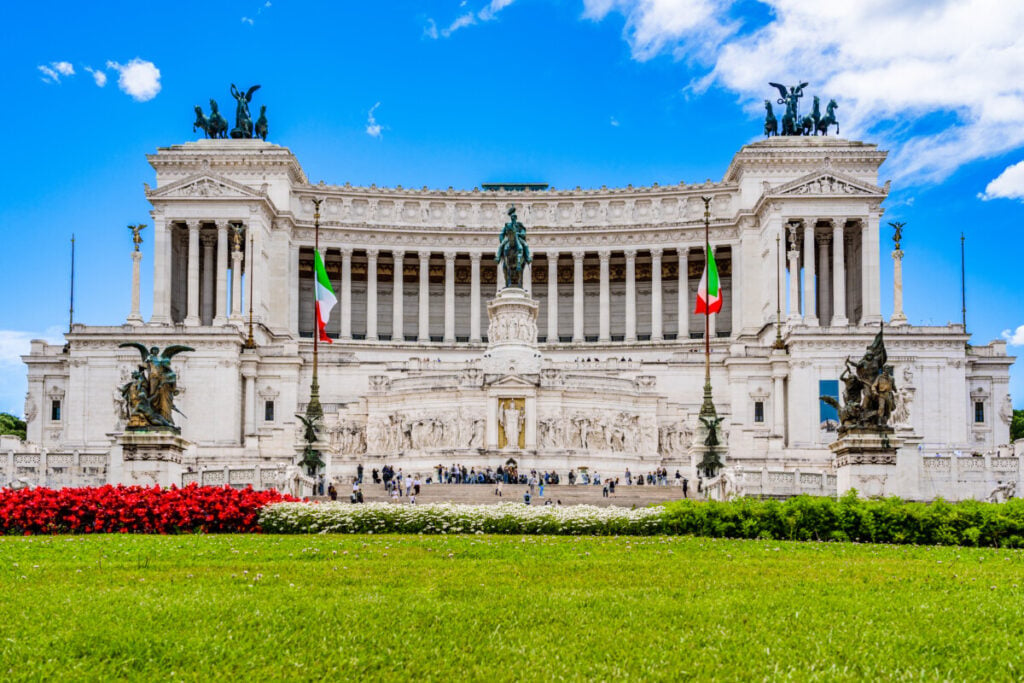

Address: Piazza Venezia, 00186 Roma RM, Italy
The Victor Emmanuel II National Monument is an important cultural landmark built to honor King Victor Emmanuel II, the first king of a unified Italy. Known as the Altare della Patria, this huge, gleaming white behemoth is a modern agora, connecting levels with sweeping staircases under the watchful eyes of a statue of Vicor on horseback.
A complicated symbol of national pride, it celebrates Italy’s journey to unity despite abolishing the Italian monarchy. The Vittoriano is a powerful emblem, reflecting the country’s historical journey and offering panoramic views that rival Rome’s ancient attractions.
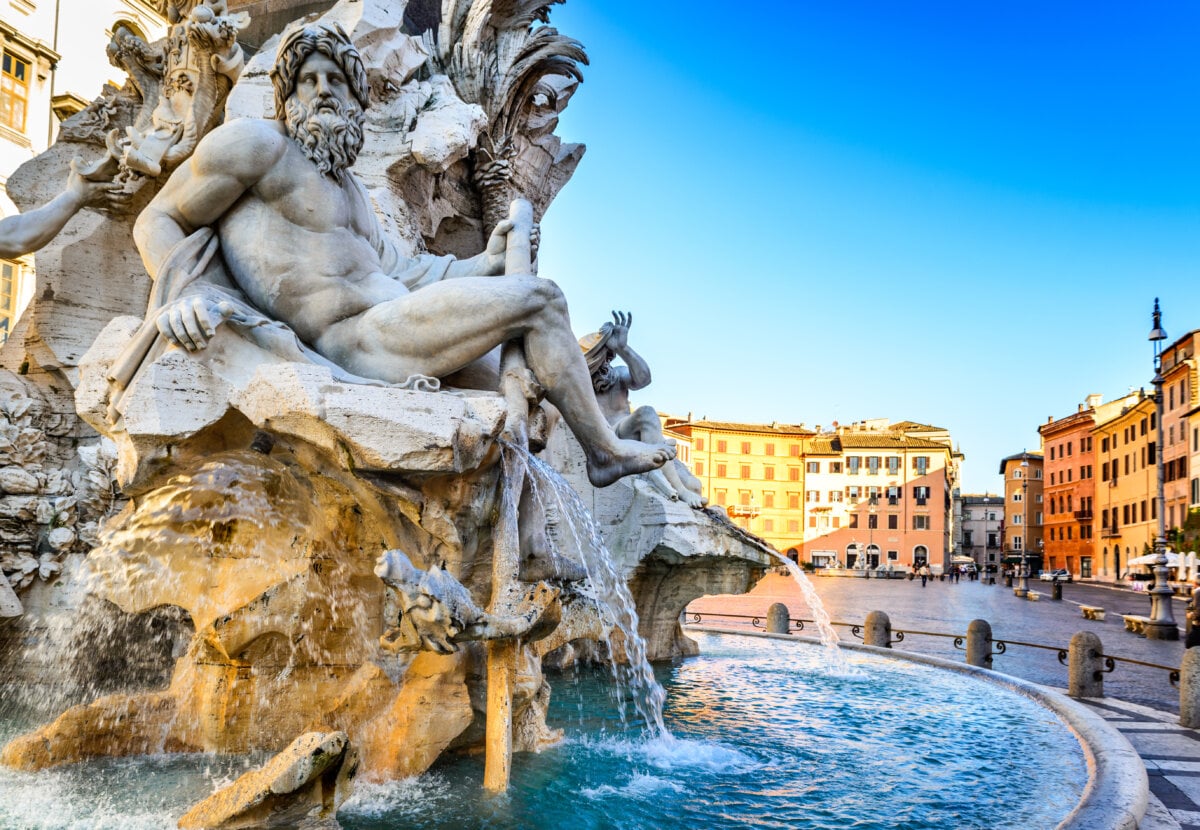

Address: Piazza Navona, 00186 Roma RM, Italy
Another landmark square in Rome is the Piazza Navona, established in the late 15th century. Built on the bones of the ancient Stadium of Domitian (some of which can be seen), it’s embraced by Baroque architecture and is a popular meeting point for locals and tourists alike.
The oblong space, echoing the shape of the ancient stadium it covers, now dances with Bernini’s fountains. The Fountain of the Four Rivers is the centerpiece.
A masterpiece of movement and marble, it was built in the late 17th Century as a tribute to (what was at the time) the world’s four great rivers: the Danube, Ganges, Nile, and the Plate. Like the Piazza del Popolo, it has an Egyptian obelisk, albeit a replica, as a centerpiece.
Fake or not, it hasn’t stopped this piazza from capturing the imagination of folks from around the world. The square is frequently mentioned in works of literature and has enjoyed starring roles in a number of major Hollywood movies.
10. Arch of Constantine – For God and Emperor
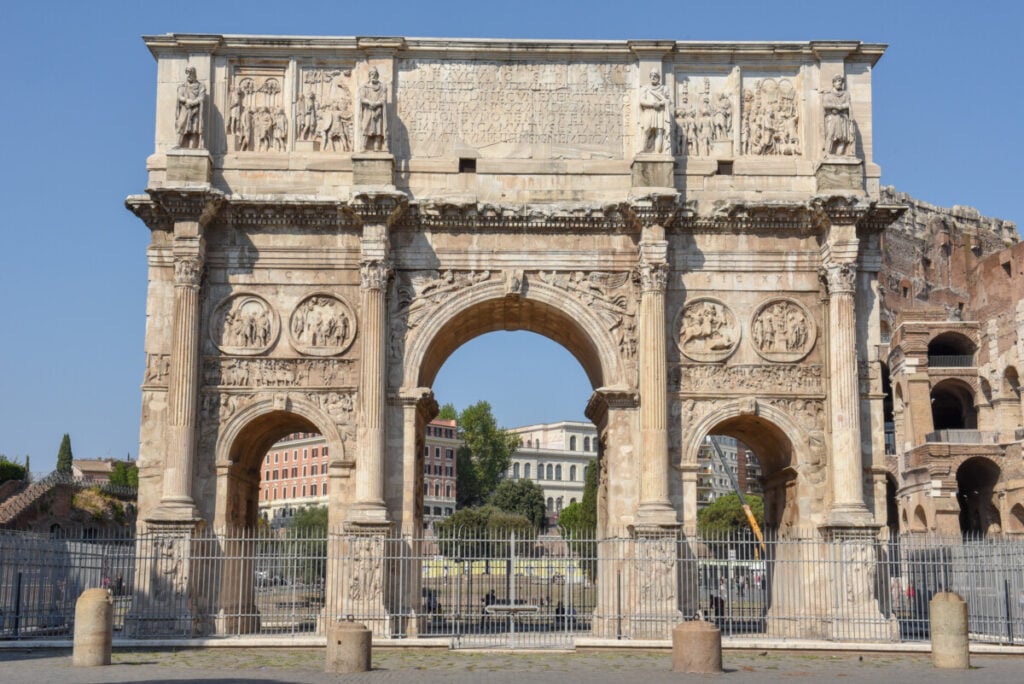

Address: Via di San Gregorio, 00186 Roma RM, Italy
It’s widely considered that the Arch of Constantine was erected to commemorate Roman Emperor Constantine I’s triumph over his rival Emperor Maxentius at the Battle of Milvian Bridge. Most historians think this pivotal battle was the last major step that led to the end of the Tetrarchy, allowing Constantine to become the sole ruler of the Empire and ushering in Christianity as the state religion.
This is a triumphal arch, a Roman concept of bespoke monuments built to commemorate major triumphs, like military victories. Copied the world over, the most famous example is the Arc de Triomphe in Paris, but this one here is arguably more impressive since it’s almost as immaculate – and almost 1500 years older. This triumphal arch is a collage of spoils and sculptures pilfered from earlier monuments to re-tell a new emperor’s victory.
11. Sistine Chapel – Vatican City’s Celestial Canvas
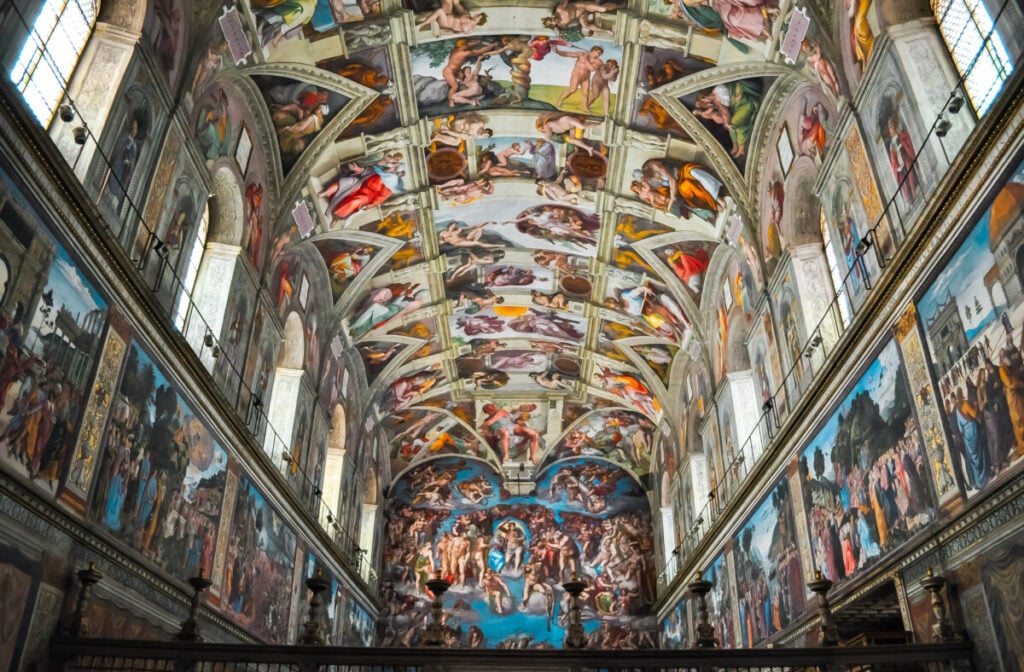

Address: 00120 Vatican City, Italy
Now, if you wanna get all pedantic, this next one technically isn’t an Italian landmark, as it’s in the Catholic microstate of the Vatican. Still, if you’re in Rome and have never seen the Vatican, you’re overdue a visit!
The center of Vatican City is the only Sistine Chapel, whose ceilings became the tapestry of Michelangelo’s genius. This hallowed hall is the seat of the Catholic faith. It’s the pope’s official residence, and cardinals convene here to elect new popes when it’s time to find a successor.
The chapel underwhelms many first-time visitors – that is, until they get inside. The Sistine Chapel is home to most of Christianity’s hallowed texts and works of art, such as the Creation of Adam by Michelangelo.
While there are some of the faith’s most marvelous contributions from a number of legendary artists, it is the efforts of Michelangelo that steal the show. Painstakingly preserved for centuries, the cathedral gallery’s frescoes (especially the ceiling) are the main reason this is one of Europe’s most lauded UNESCO World Heritage Sites.
12. The Vatican Museums – A Sanctuary of Art and Faith
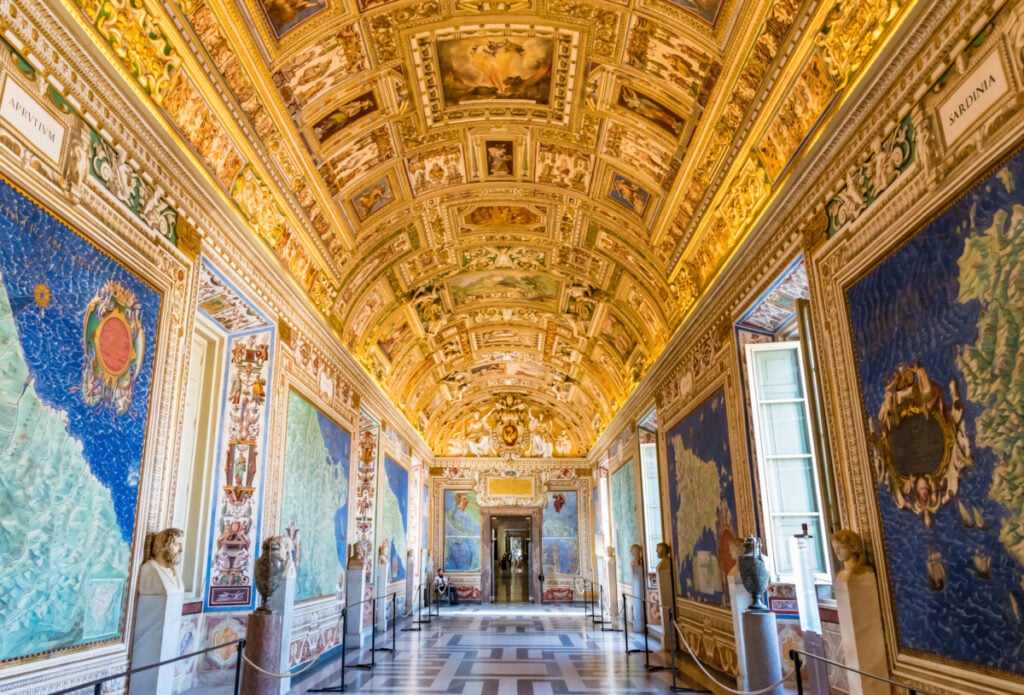

Address: 00120 Vatican City, Italy
Again, it’s technically not Italian (yawn), but when in Rome! Within the Catholic confines of the Vatican Complex are the Vatican Museums, offering a pilgrimage of artistry and Catholic spirituality. With walls that bear the brushstrokes of Michelangelo and Raphael, it’s a journey through the Renaissance, the human mind, and divine inspiration.
The Vatican Museum houses a vast collection, a beacon for seekers of beauty and wisdom from across the globe. As you traverse the galleries, you’re treated to a visual feast that has to be seen and believed. It’s worth noting that while the museums are filled with beautiful art and antiquities from floor to ceiling, this is just a fraction of the priceless works and artifacts hoarded by the Vatican, never to see the light of day.
13. Villa d’Este – Tivoli’s Nicest House
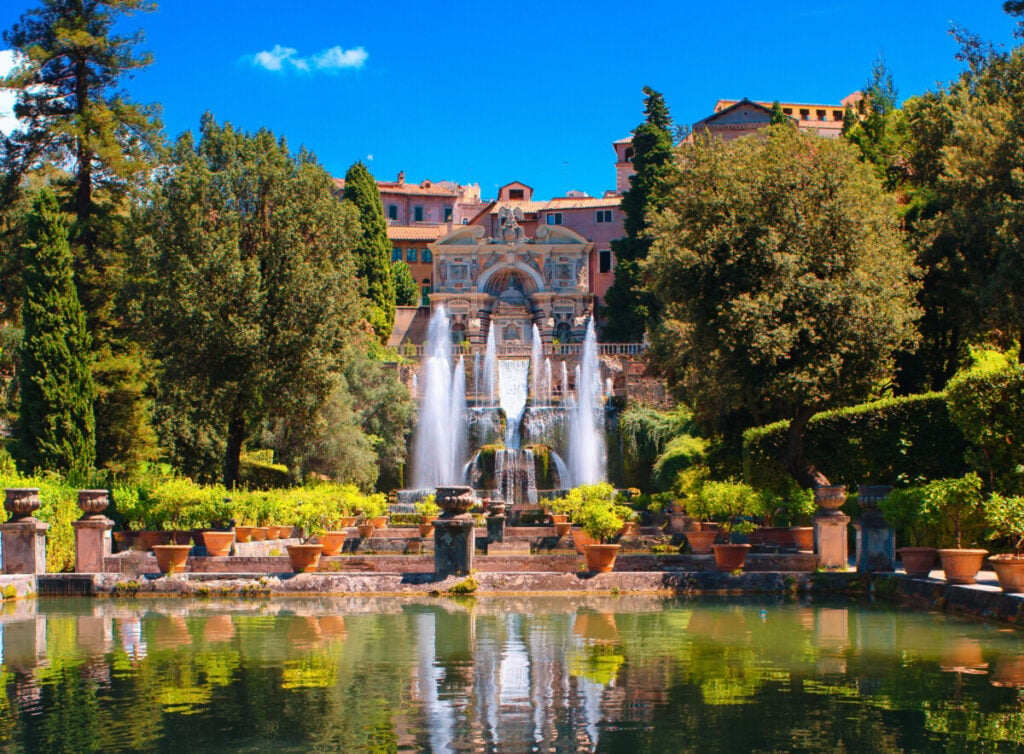

Address: Piazza Trento, 5, 00019 Tivoli RM, Italy
The Villa d’Este in Tivoli, just outside Rome proper, is a masterpiece of the Italian Renaissance, celebrated for its grand garden terraces and mesmerizing fountains. As a UNESCO World Heritage Site, this 16th-century villa and its grounds make for a captivating day out.
Now a state museum, Villa d’Este invites exploration of its lush gardens, where the symphony of water fountains and the elegance of Renaissance design demonstrate the best artistry and creativity synonymous with Italy since the Romans.
Milan
14. Duomo di Milano – The Pinnacle of Gothic Splendor


Address: Piazza del Duomo, 20122 Milano MI, Italy
Rising from the heart of Milan, the Duomo di Milano (or Milan Cathedral, aka the Metropolitan Cathedral-Basilica of the Nativity of Saint Mary) is a masterpiece of Gothic architecture. And somehow, describing it as a “masterpiece” still seems inadequate. It’s a sculptural epic, a stony lacework of finesse and grandeur that dominates Milan’s skyline. And it’s the largest church in the country!
Consistently added to over centuries, its gleaming spires reach for the heavens like prayers carved in marble. Every pinnacle, statue, and stained-glass window tells a story of devotion, not just to Saint Mary or Milan, but to the labors of love put into building the Duomo over generations. The sheer magnetism of the craftsmanship adoring every inch of this famous church is a huge draw for tourists.
15. The Last Supper – Da Vinci’s Take on Dinner
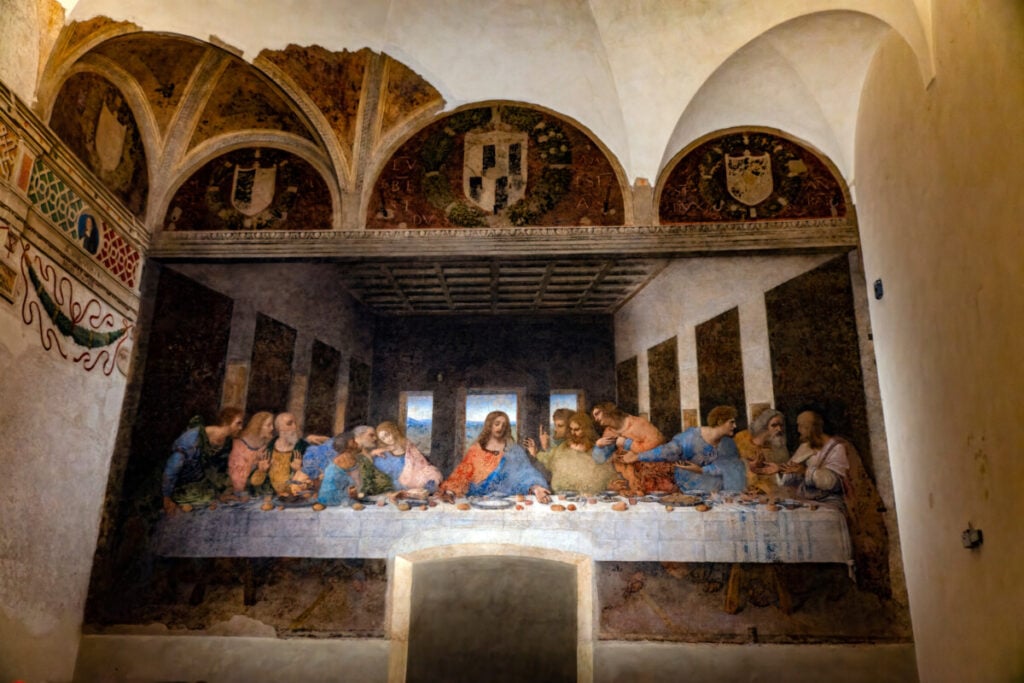

Address: Piazza di Santa Maria delle Grazie, 20123 Milano MI, Italy
Among Milan’s many treasures is one of da Vinci’s most famous works. The Last Supper by Leonardo da Vinci resides in Milan’s Convent of Santa Maria delle Grazie.
This mural captures the poignant moment of Christ’s final meal with all his chums. Although weathered the centuries, Leonardo Da Vinci’s masterpiece draws thousands daily, allowing them to contemplate the layers of meaning within each apostle’s expression.
16. Galleria Vittorio Emanuele II – Shopaholics Apply Here


Address: Piazza del Duomo, 20123 Milano MI, Italy
Fancy a little retail therapy when taking in the best historical landmarks in Italy? Milan’s Galleria Vittorio Emanuele II, a grand shopping arcade beneath a soaring glass canopy, celebrates commerce, architecture, and the Italian flair for style.
This cross-shaped mall, with its mosaic floors and opulent storefronts, is the oldest shopping mall in Italy and one of the most famous shopping centers in the whole world.
The Galleria is more than a shopping destination; it’s an architectural marvel in its own right. A shopping trip here is to walk a path of elegance consisting of gilded columns, mosaics, and frescoes. You can spend hours wandering this place without actually buying anything.
Venice
17. The Grand Canal – Italy’s Soggiest Main Street
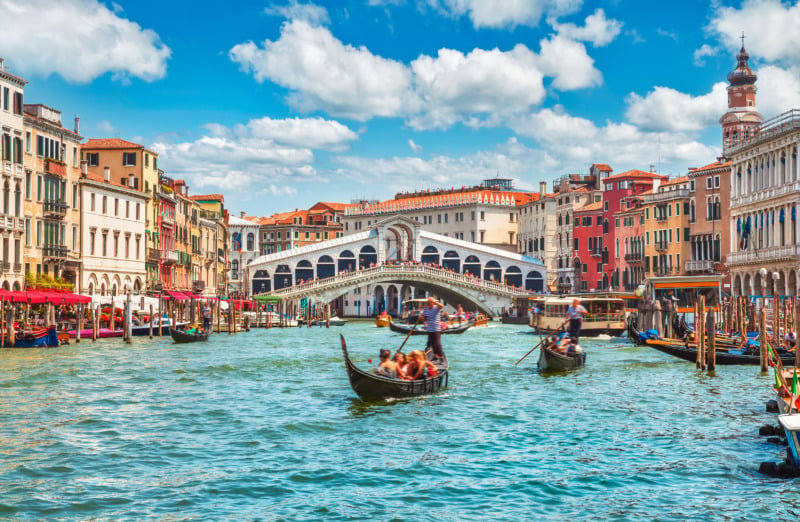

Location: Venice, Italy
Venice’s Grand Canal snakes through the city like a main artery and is the island city’s main highway. This liquid boulevard, flanked by stately edifices and bustling with gondolas, is the city’s lifeblood and main attraction.
It’s a floating showcase of Venetian culture and architecture, and every building reflects a chapter of Venetian history. A gondola voyage along the Grand Canal is mandatory for first-time visitors. I also highly recommend visiting the canal during the Carnival to enjoy the festivities!
18. Rialto Bridge – A Most Charming Arch
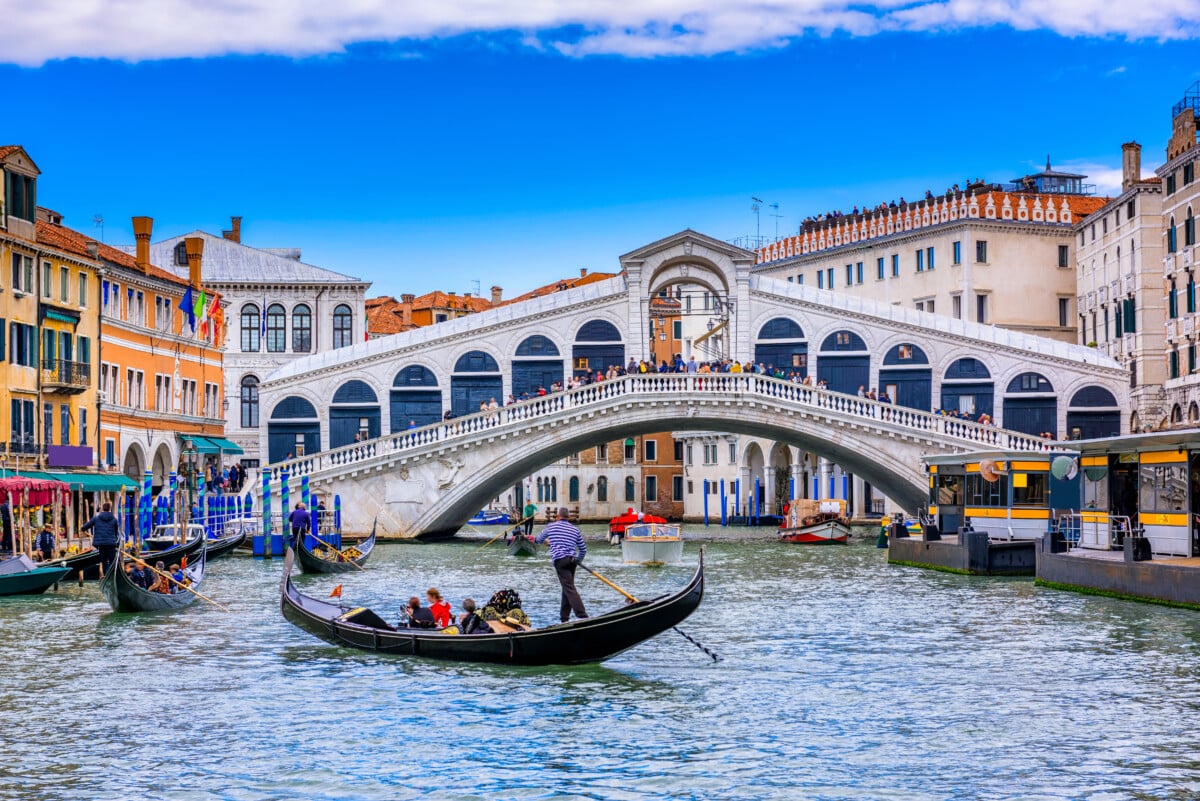

Address: Sestiere San Polo, 30125 Venezia VE, Italy
The Rialto Bridge arches over the Grand Canal in Venice, the oldest of the four bridges that do so. This sturdy stone arch bridge serves as a fairway and one of Venice’s most famous attractions, where thousands of tourists cross and photograph it each day.
A romantic backdrop for countless Venetian tales, take a stroll and gaze at the clockwork ebb and flow of gondolas and vaporetti from the bridge. You’ll also find yourself near some top cafes and trattorias if you need to refuel.
See Related: Most Beautiful Towns in Europe to Visit
19. St. Mark’s Basilica -The Doge’s Gilded Crown
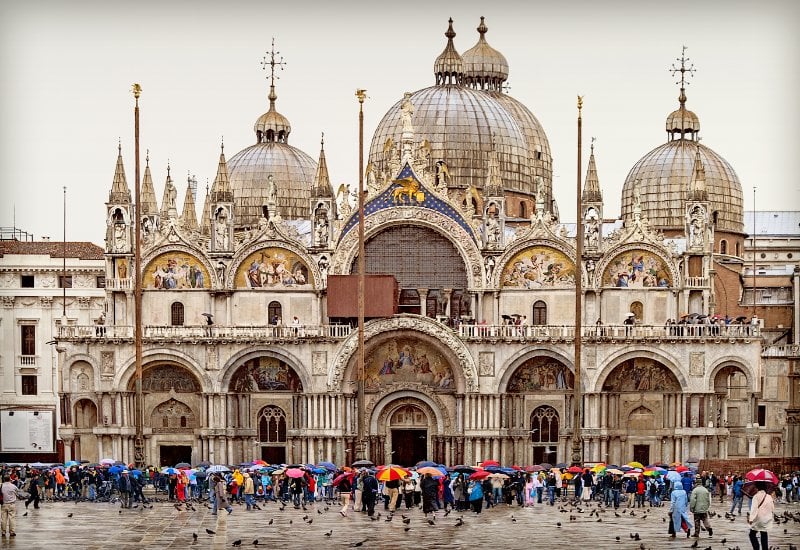

Address: Piazza San Marco, 30124 Venezia VE, Italy
Overlooking the Piazza San Marco (Saint Mark’s Square), St. Mark’s Basilica is a feast for architecture buffs, blending Byzantine, Gothic, and Romanesque styles. It’s also a masterclass in Venetian opulence and a great history lesson.
A roof of domes and spires covers a collection of gold mosaics, vaunted naves, and various paintings and sculpture works spanning centuries. The basilica was built when the mercantile city-state of Venice was a commercial powerhouse and a bridge between East and West.
You can see this in its stunning façades, adorned with marble and treasures looted from Constantinople. Inside, you’ll find a wealth of gaudy Medieval and Renaissance art. The basilica’s golden mosaics of saints and scripture further point to the immense wealth flowing through the city.
20. Piazza San Marco – Venice’s Open-Air Salon
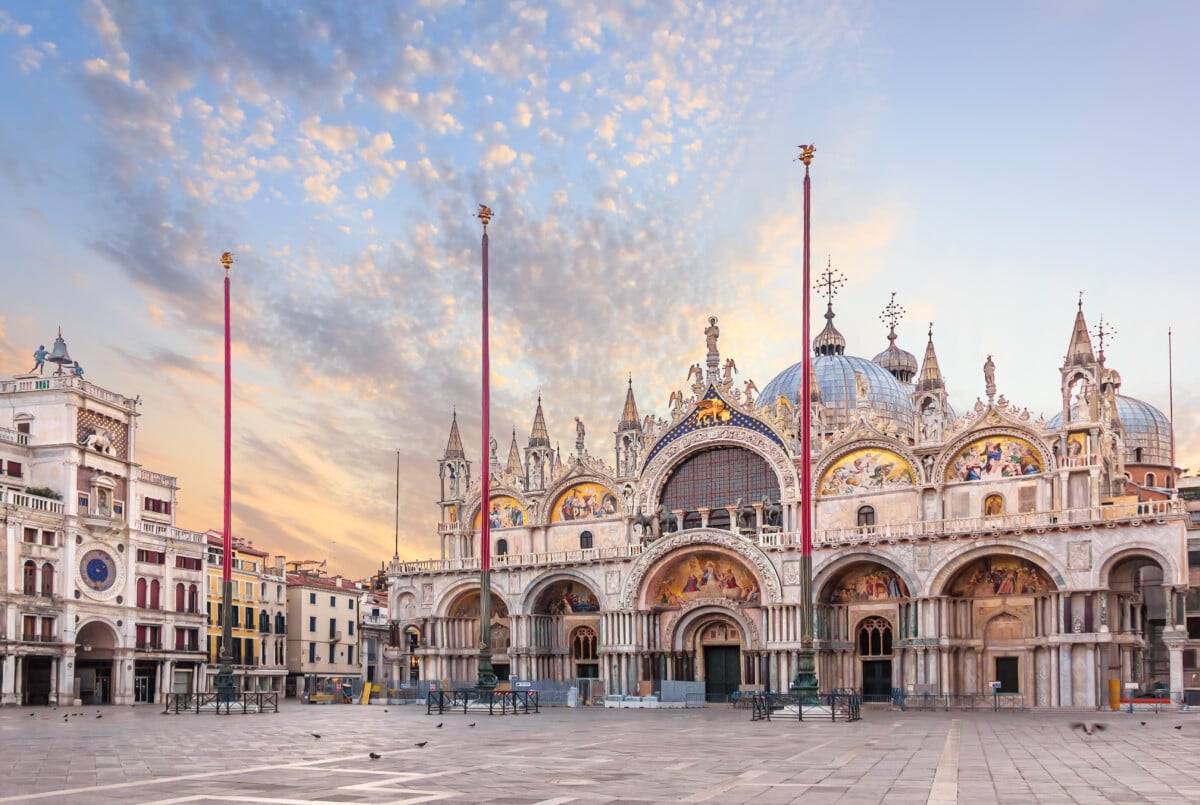

Address: Piazza San Marco, 30124 Venezia VE, Italy
Piazza San Marco (or Saint Mark’s Square) is the principal public square of Venice and has been described as “the drawing room of Europe.” Flanked by St. Mark’s Campanile, St. Mark’s Basilica, and the Procuratie Vecchie, it’s a nickname well deserved.
It’s one of those classic European city squares where pigeons flutter amongst pedestrian feet, the air thick with chatter, café orchestras, and the occasional waft of something delicious. It’s the ideal place to start a day in Venice, wander, snap some pics, or grab something to eat.
Florence and Bologna
21. Uffizi Gallery – Corridors of Wonder
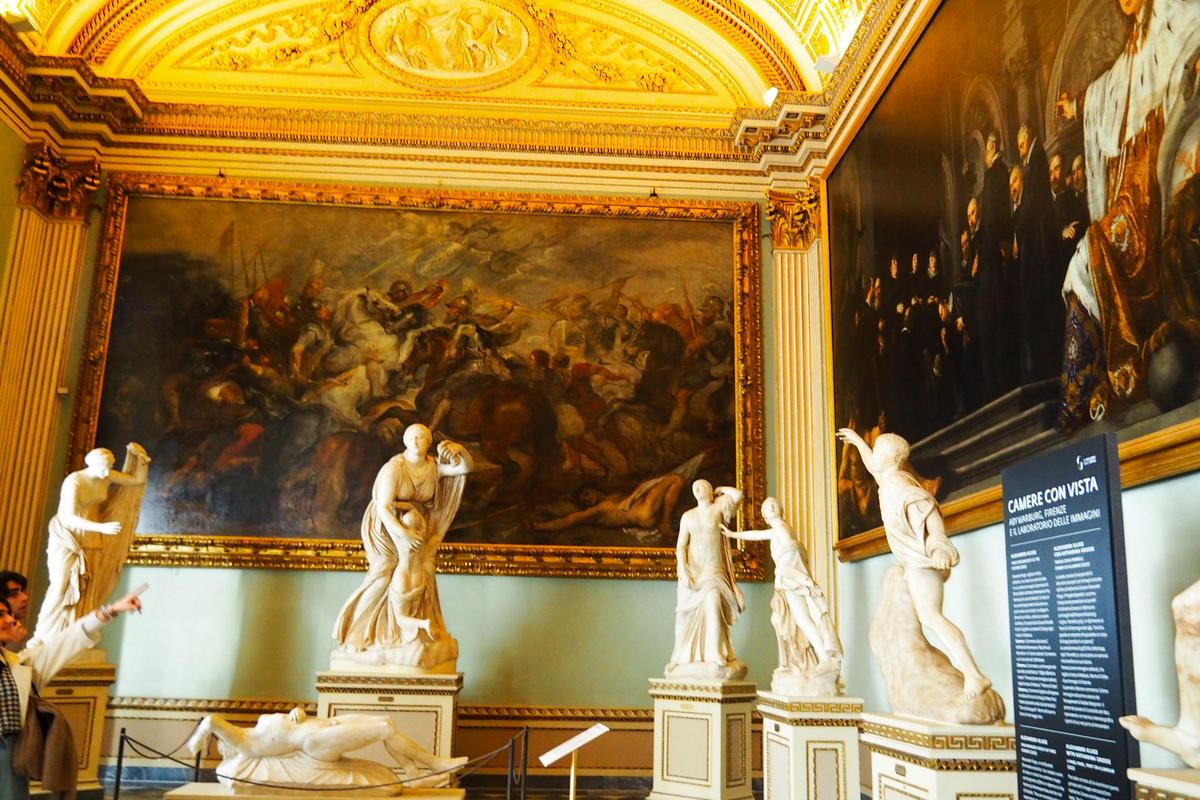

Address: Piazzale degli Uffizi, 6, 50122 Firenze FI, Italy
Florence has fascinating galleries and museums, but none have nearly the same representation as the world-famous Uffizi Gallery. This art museum attracts around one million visitors annually and holds a world-class Renaissance collection. The genius of Da Vinci, Botticelli, and Caravaggio speaks through the canvases and colors lovingly displayed here.
And the building isn’t disappointing either, inside or out. As well as being a center for Italian art and culture, the Uffizi Gallery is stunning from room to room.
22. Loggia dei Lanzi – Right in the Uffizi’s Backyard
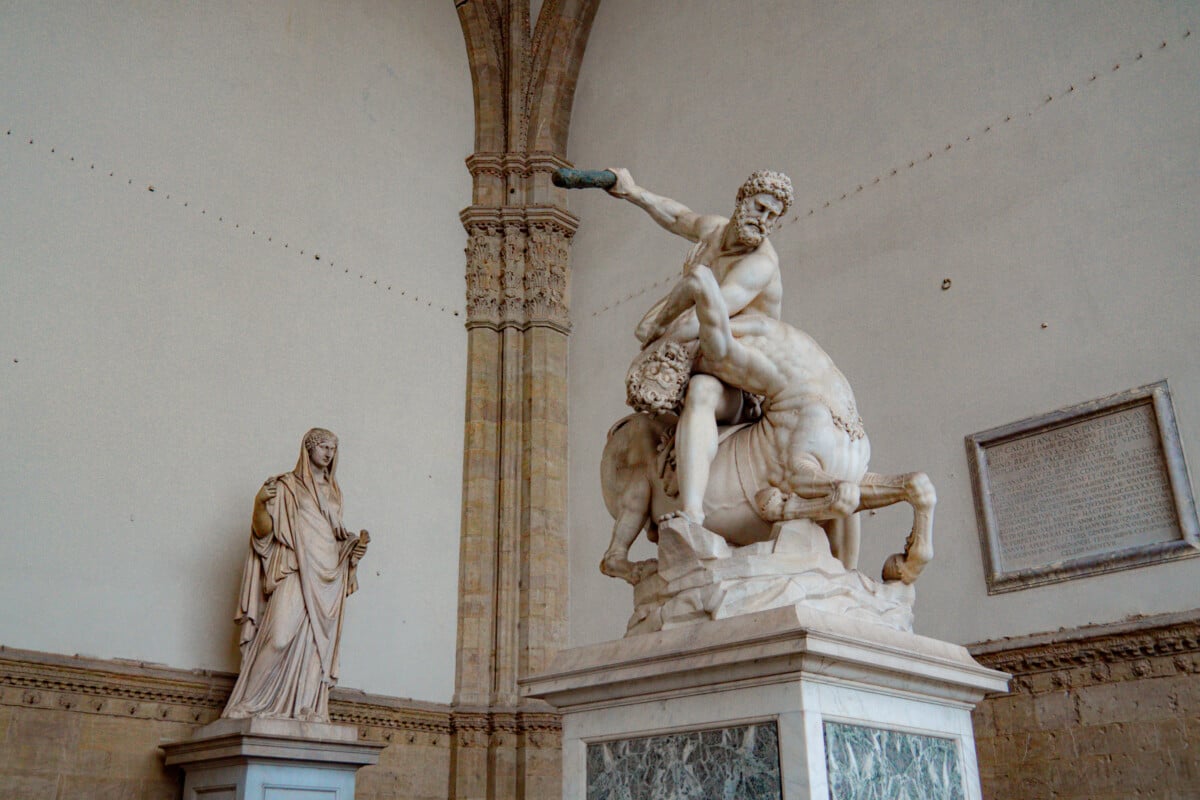

Address: Piazza della Signoria, 50122 Firenze FI, Italy
The Loggia dei Lanzi offers a covered open-air gallery of Renaissance statues, with wide arches that spill into the bustling Piazza della Signoria. Adjacent to the Uffizi Gallery, it presents a blend of art and architecture, where clustered pilasters meet Corinthian columns known as capitals. It’s a lovely little stop for quick photos and is unmissable if you visit the Uffizi Gallery.
23. Santa Maria del Fiore – Florence’s Duomo
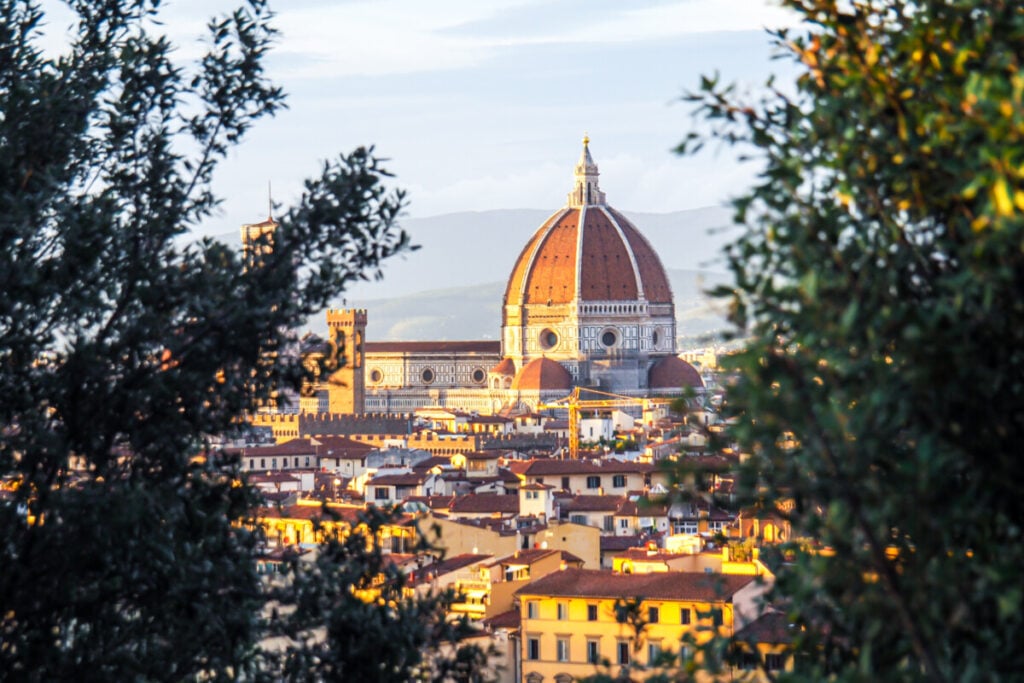

Address: Piazza del Duomo, 50122 Firenze FI, Italy
Taking nearly 200 years to build, the Cathedral of Santa Maria del Fiore (or Florence Cathedral), crowned by Brunelleschi’s dome, is one of the defining features of Florence’s breathtaking skyline.
The Duomo, with its intricate marble panels in shades of green and pink, is a sonnet that exemplifies the city’s beautiful historic architecture. It remains a functioning Roman Catholic church to this day and is a wonderful place to lose yourself for an hour.
The dome of the Duomo is nothing short of an engineering marvel, especially considering it was built in the 15th Century. It’s also the largest brick dome in the world, beautifully complimented by the Baptistry and the mesmerizing facade, the latter being added in the 19th Century.
The interior decorations of the cathedral help enhance its status as a major tourist attraction, featuring exquisite marblework and beautiful 16th-century paintings by Vasari and Zuccari.
24. Ponte Vecchio – The Last Bridge in Florence
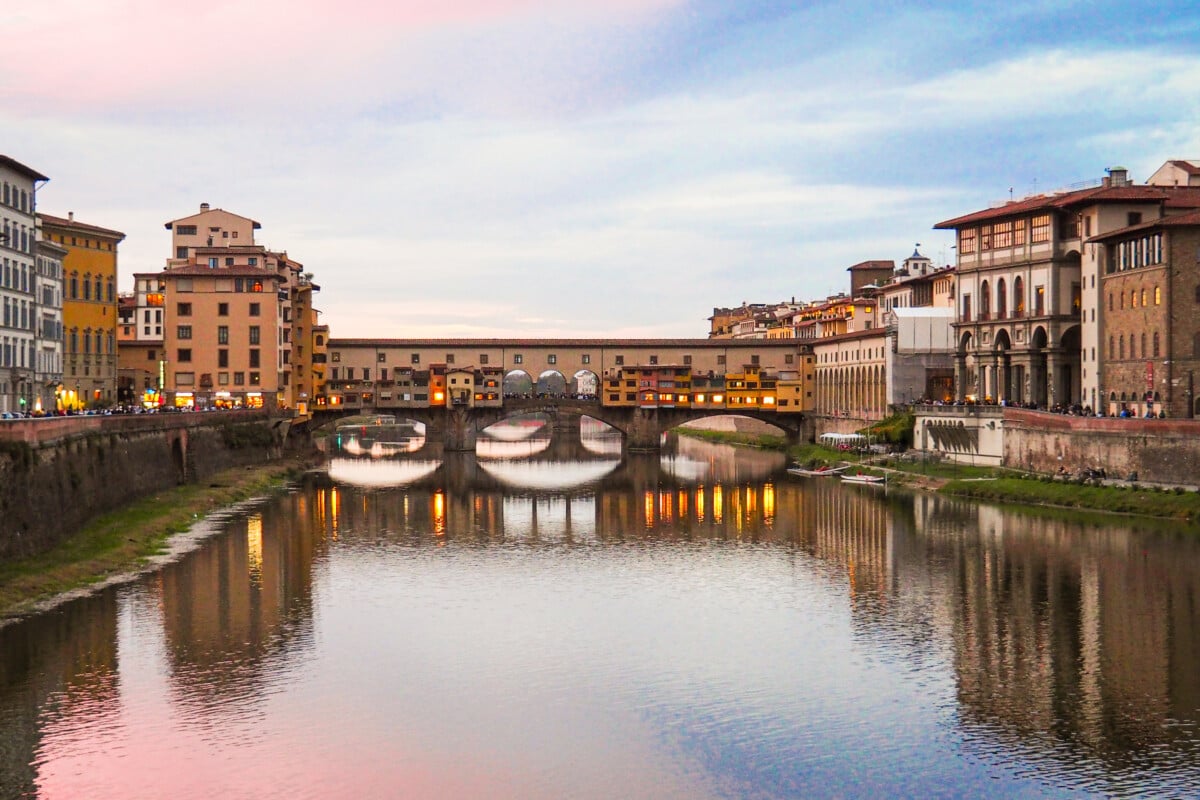

Address: Ponte Vecchio, 50125 Firenze FI, Italy
Florence’s Ponte Vecchio is a Medieval bridge over the like no other. Not only is it the oldest bridge in Florence, but it’s also the only bridge in Florence that survived World War II.
But that’s not even the most impressive part – Ponte Vecchio is a genuine merchants’ bridge. Lined with goldsmiths and jewelers, it’s a living piece of Florentine commercial history and the best place to grab a souvenir.
The bridge is popular with tourists during peak season and around lunchtime, so be strategic about your visit. If you visit at sunset, the Arno River reflects the bridge’s glow, a scene artisans and romantics have savored for centuries!
25. Piazza Maggiore – Bologna’s Excellence in One
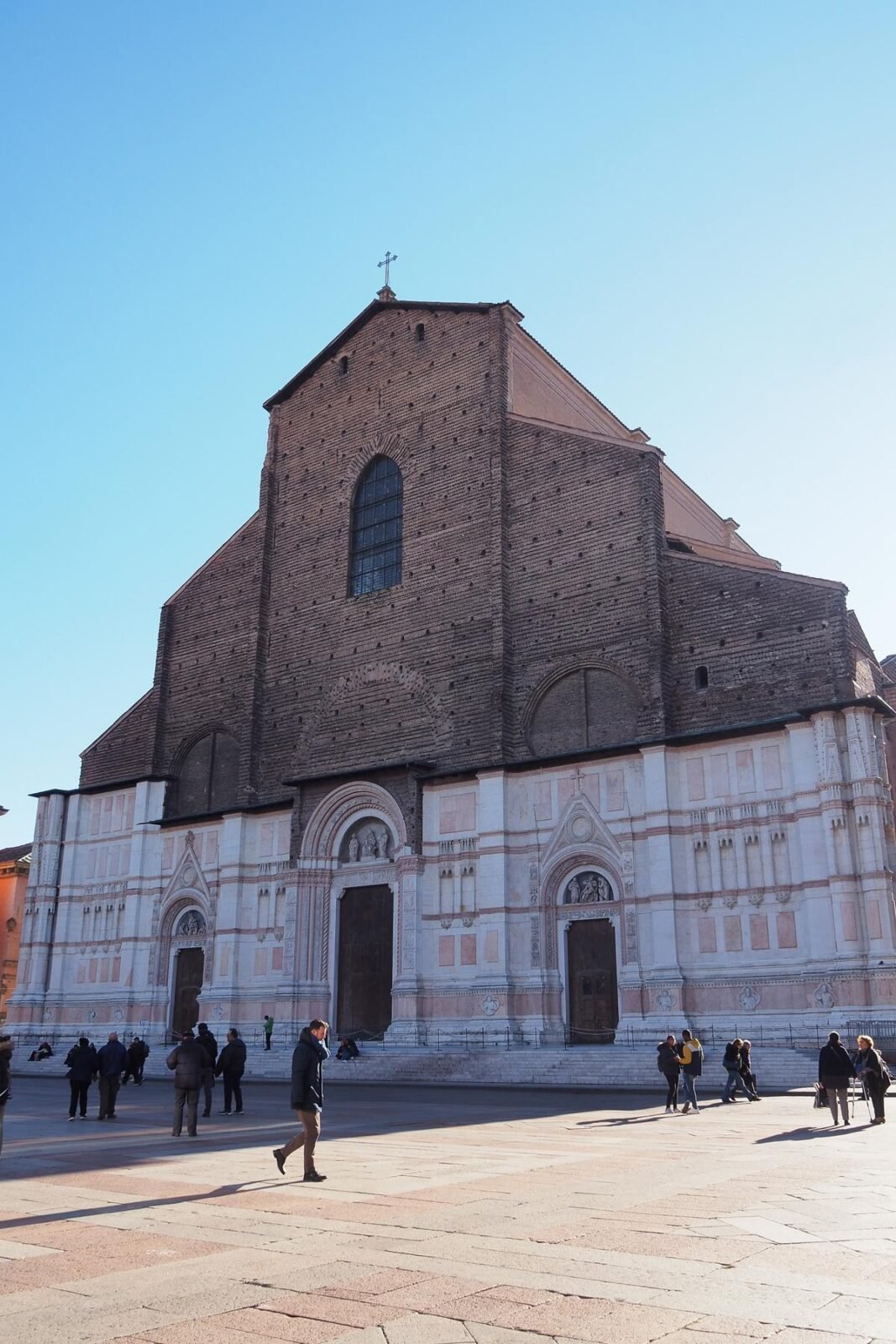

Address: Piazza Maggiore, 40124 Bologna BO, Italy
You might say that Piazza Maggiore is the beating heart of Bologna, and not just because all of the city’s most famous landmarks and popular attractions are right here!
This grand medieval square surrounded by historic palaces has been a focal point for urban life since the 13th century, hosting markets, public speeches, and even popes addressing their flock.
Pay attention to the Basilica of San Petronio, which has an unfinished façade and is a humble giant that witnesses the daily theater of city life. You might also want to do a bit of souvenir hunting here or maybe find a bite at one of the eateries you can find on the square.
Naples and The Amalfi Coast
26. Pompeii – The Dead City
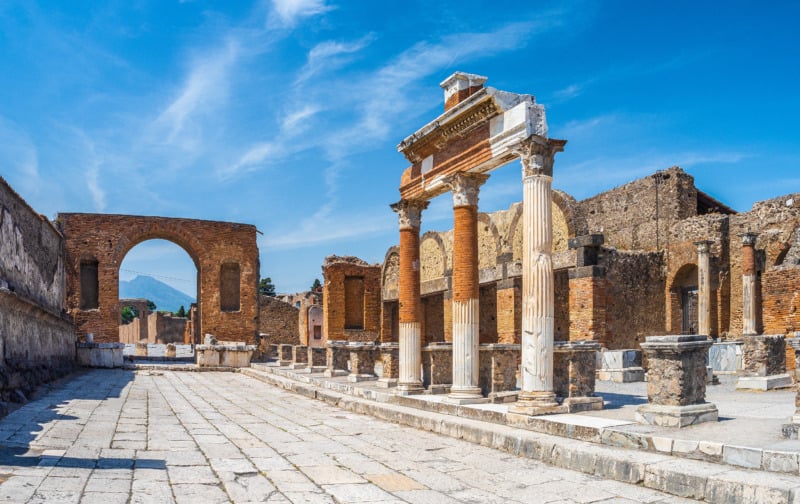

Address: Pompei, Province of Naples, Italy
The city of Pompeii is one of the most visited landmarks in Europe and a UNESCO World Heritage Site. It’s a haunting snapshot of the city’s last day frozen in time and an essential day trip from Naples.
When Mount Vesuvius erupted in 79 AD, it blanketed the city in volcanic ash, preserving much of it – including people. Today, it is one of the most profound archaeological sites, offering an unparalleled window into ancient Roman life.
The ruins of Pompeii are a mosaic of ancient Roman baths, derelict streets, homes, public spaces, restaurants, and well mosaics. Exploring Pompeii is a journey into the heart of human fragility and the power of nature and a poignant reminder of civilization’s enduring echo.
27. Amalfi Coast – A Ribbon of Heaven
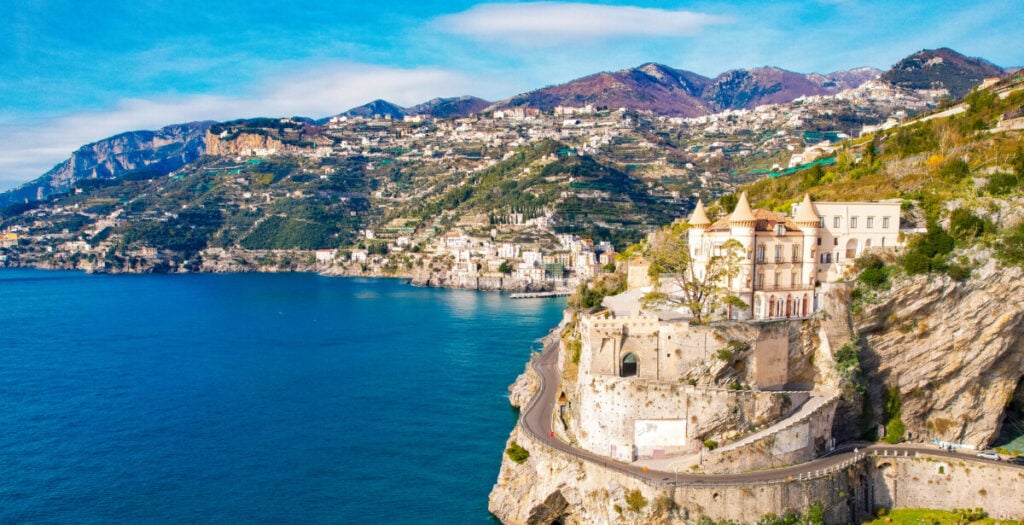

Location: Province of Salerno, Italy
The largest and arguably most breathtaking natural landmarks in Italy is the Amalfi Coast and the legendary road clinging to mountainous curves along Italy’s western coast. This destination offers vistas that ignite the imagination, food that excites the tastebuds, and sun, sea, surf, and sand to suit any seaside vacation.
This UNESCO-listed marvel, with its precariously perched villages and terraced vineyards, is a canvas of natural and human artistry. The azure waters of the Tyrrhenian Sea, cradled by sun-drenched beaches and cliffs, create a paradise for seekers of beauty and repose.
A journey along the Amalfi Coast is an odyssey into the heart of Mediterranean allure, where each turn reveals a scene more picturesque than the last.
See Related: 2 Days in Amalfi Coast Itinerary
More Famous Landmarks in Italy
28. Lake Como – The Jewel of Lombardy
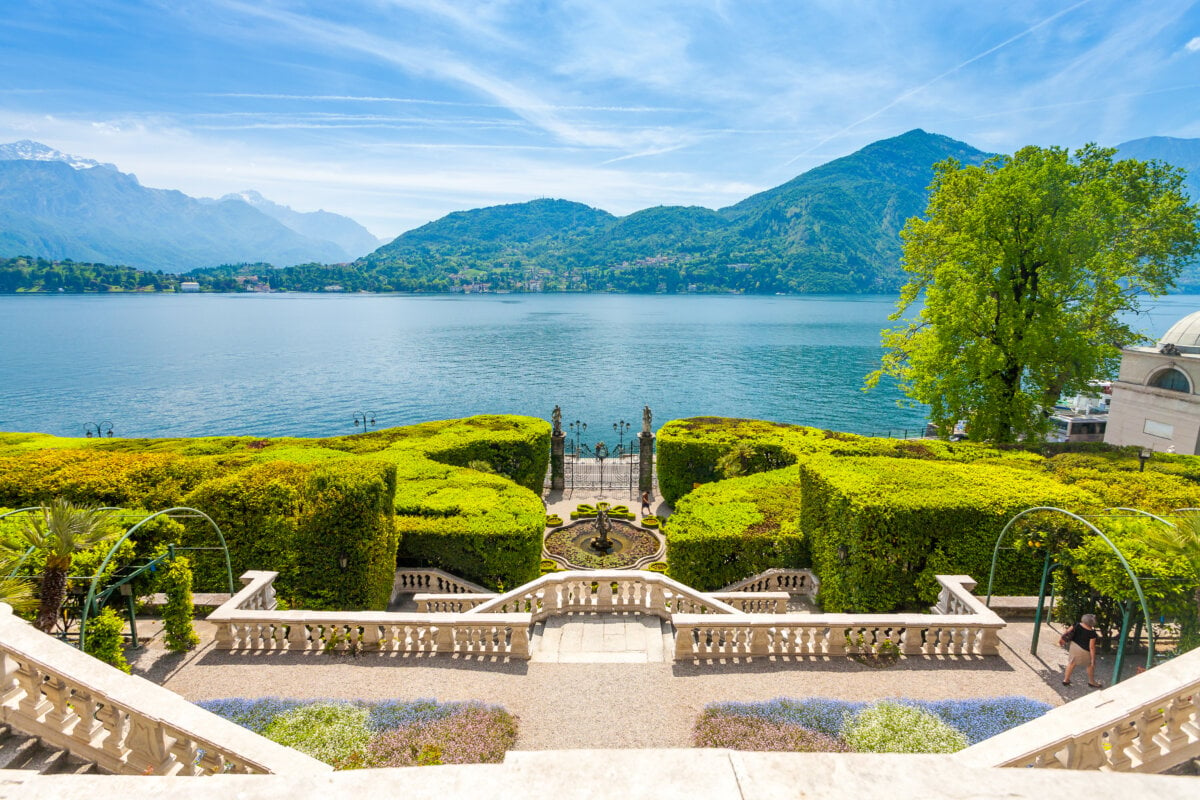

Location: Lombardy Region, Italy
Lake Como is among Italy’s most famous natural landmarks and an extremely popular destination in summer and winter. Cradled in the Italian Alps is a sanctuary of tranquility and natural splendor.
Renowned for its dramatic scenery, the lake has been a retreat for aristocrats and the wealthy since Roman times. Now, it’s a haven for all who seek the serenity of its calm waters and the charm of its lakeside villas and gardens.
It is a destination that has inspired poets, writers, and travelers, all seduced by its reflective waters and the peaceful rhythm of lakeside life. Being in Northern Italy, it’s also within easy reach of Florence and Verona, as well as day trips to Switzerland.
29. Leaning Tower of Pisa – The Tilted Wonder
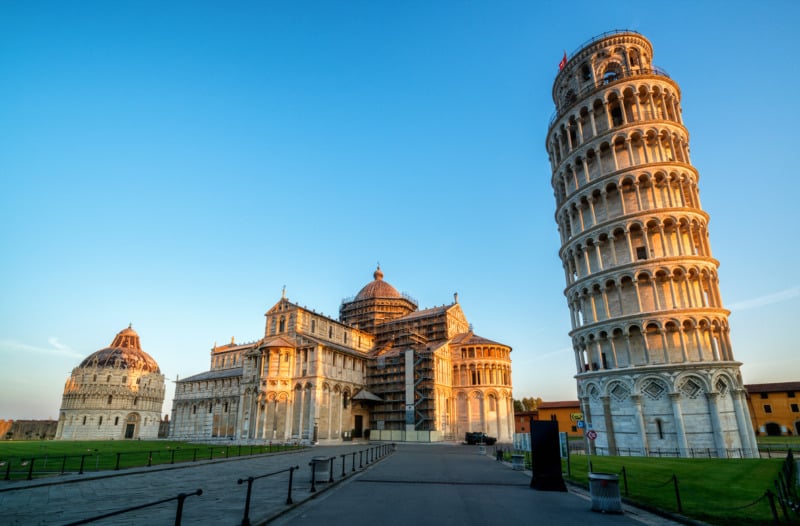

Address: Piazza del Duomo, 56126 Pisa PI, Italy
Yes, it is a little overdone and much smaller than many think. Still, the Leaning Tower of Pisa is arguably the most famous landmark in Italy and certainly the country’s most famous tower. A marvel of medieval engineering, it juts out at an angle that seemingly defies physics. Go get that obligatory “I’m propping up the tower” photo.
With its unintended tilt, this bell tower has become a globally beloved peculiarity, charming visitors with its unique lean. Hoofing up its spiral staircase offers a tilted panorama of Pisa. This view juxtaposes the tower’s imperfect posture with the perfect beauty of the historic city and the Italian landscape.
30. Piazza del Campo – Giddy Up!
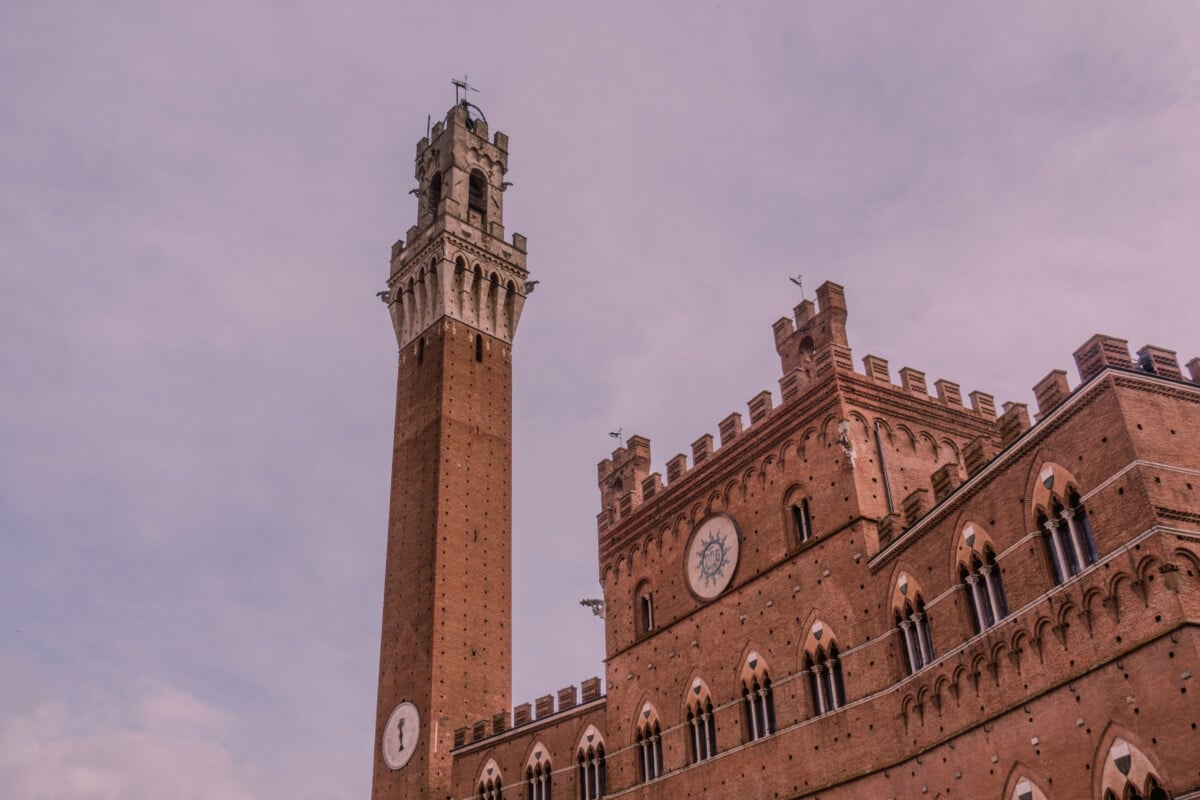

Address: Piazza del Campo, 53100 Siena SI, Italy
Siena is the capital city of Tuscany and is renowned for hosting the heart-pounding Palio di Siena horse race. This wild, colorful race is held in the Piazza del Campo—a shell-shaped medieval city square lined with tall Gothic buildings and cafes.
Twice a year, the thunder of hooves and the display of contrade banners transform this piazza into a dynamic tableau of color and passion straight from Game of Thrones or A Knight’s Tale.
When horses aren’t charging around the piazza, the Fonte Gaia fountain adds a soothing focal point to the square. The Palazzo Pubblico and its Torre del Mangia are also just a stone’s throw away, so be sure to check them out – not that you could miss them.
Related Resources



